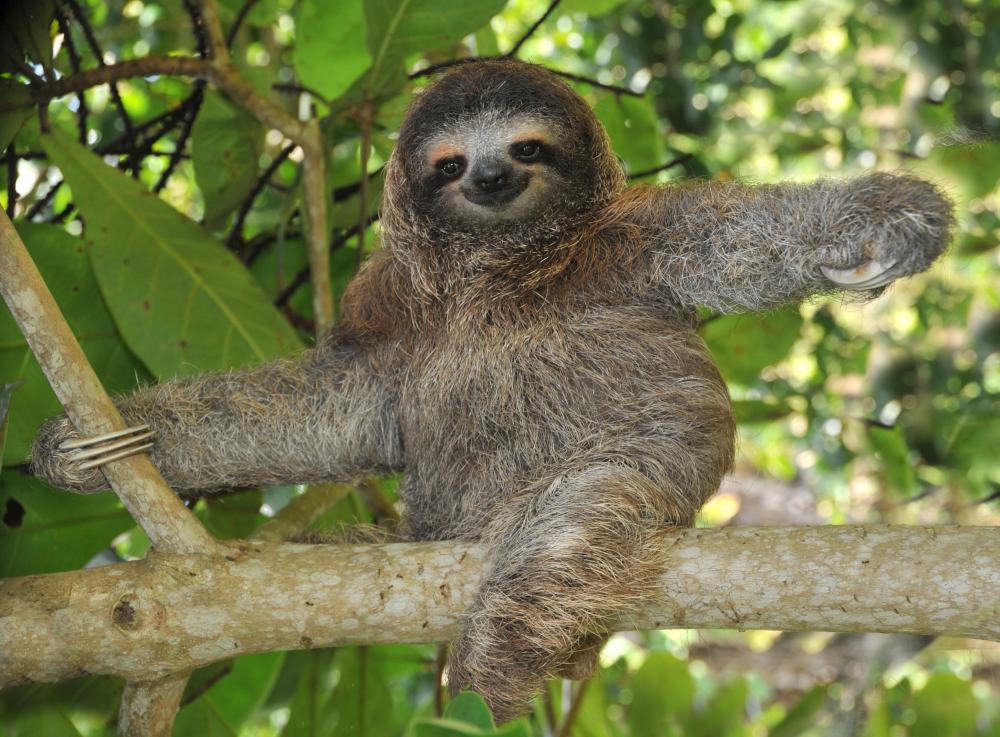At WiseGEEK, we're committed to delivering accurate, trustworthy information. Our expert-authored content is rigorously fact-checked and sourced from credible authorities. Discover how we uphold the highest standards in providing you with reliable knowledge.
Which Tree-Dwelling Mammal Can Hold Its Breath for 40 Minutes Underwater?
It’s easy to underestimate sloths. Most people know that sloths are incredibly slow (perhaps you'd even call them lazy) and that they spend most of their time hanging upside-down in the trees. But there’s far more to these creatures than meets the eye.
Native to the tropical rainforests of Central and South America, the sloth’s reputation for being slow is well-deserved. They are the world’s slowest mammals. They move so sedately that algae grows in their fur – which is useful for helping to camouflage them in the forest canopy and keep them safe from predators like anacondas, jaguars, ocelots, and eagles.

But they aren’t always slow, nor do they spend all their time in the trees. Sloths are excellent swimmers. They move far more quickly in the water than they do on land, so they sometimes choose to swim when moving to a new spot. A sloth’s physiology makes it particularly well-suited to spending time in water, as it can hold its breath for an incredible 40 minutes, thanks to a very slow metabolism and the ability to lower its heart rate. This fantastic breath-holding capability is very useful when hiding underwater from predators.
Sloths have many other unusual physical traits to complement their unique lifestyle. For example, since sloths spend so much time in the trees, their excretory system works incredibly slowly, so they only need to come down to the ground to urinate and defecate about once a week. Once on the ground, they are at their most vulnerable to predators, as they typically only cover a few feet per minute.
In praise of sloths:
- The sloth's slow metabolism means that it can survive on a very low-energy diet of tree leaves, buds, and twigs. It can take up to a month to digest a meal. Two-toed sloths have a more varied diet, including insects, small lizards, and fruit.
- Sloths tend to spend most of their time alone, except when mating or when a mother is looking after an infant. They live around 20 to 40 years in the wild.
- All six sloth species (both two-toed and three-toed sloths) spend most of their time in the trees, but for millions of years, now-extinct giant ground sloths roamed North and South America.
AS FEATURED ON:
AS FEATURED ON:











Discuss this Article
Post your comments